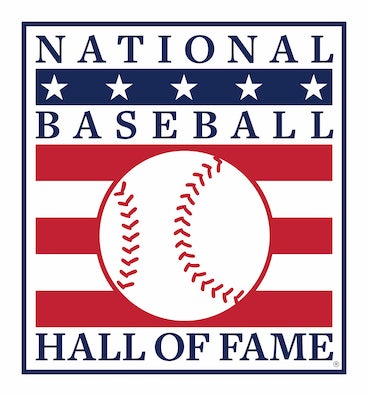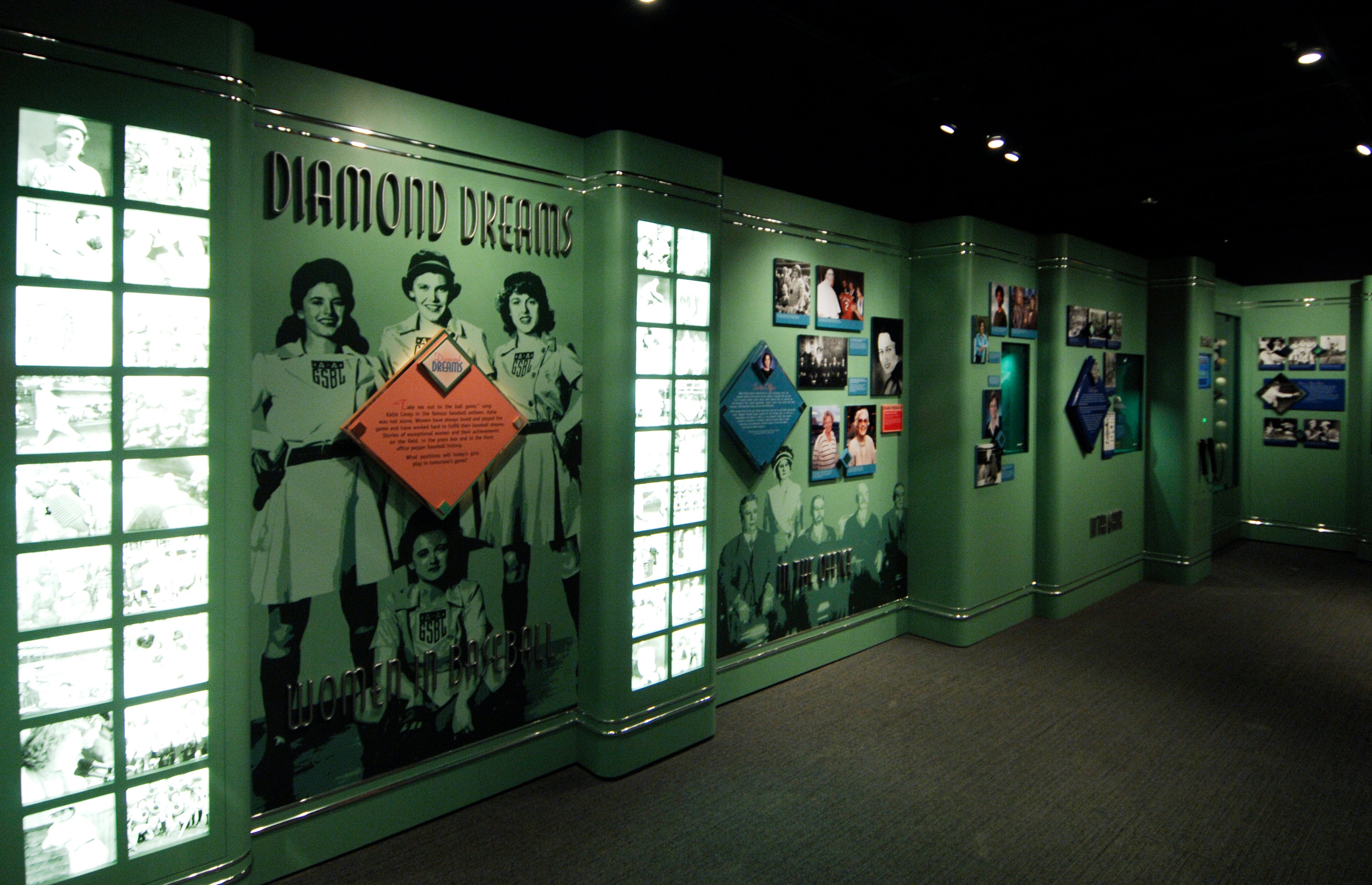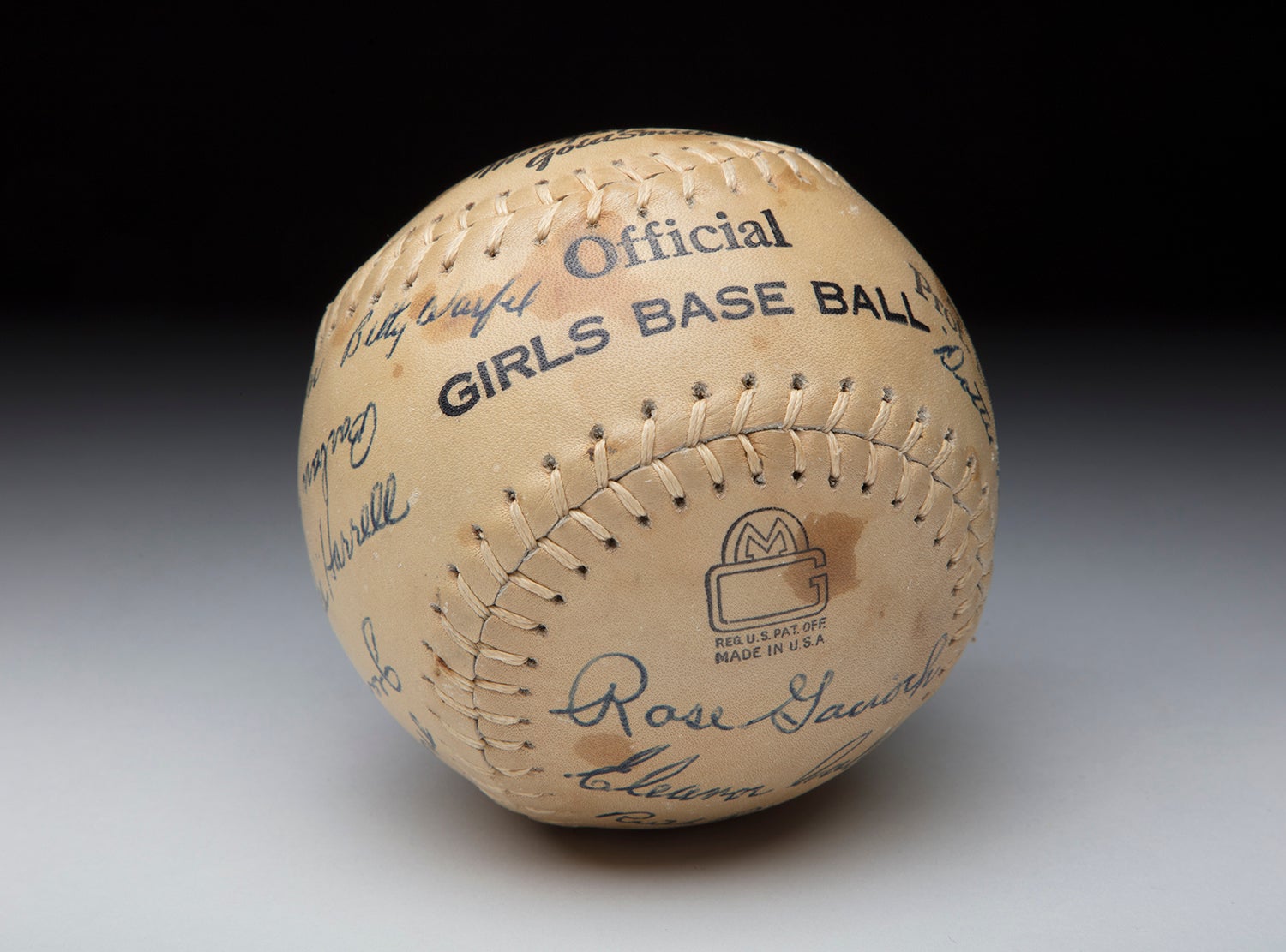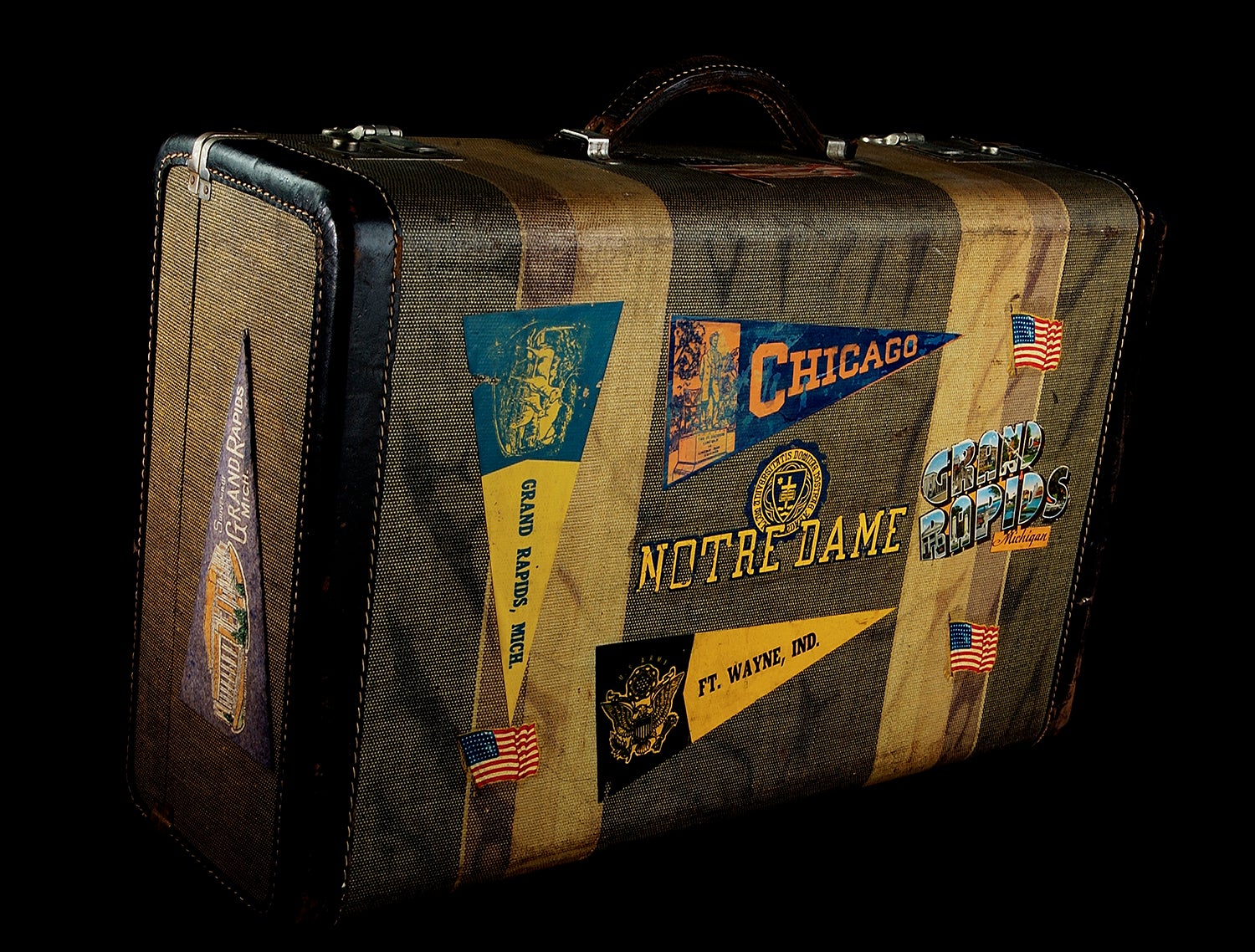- Home
- Our Stories
- #Shortstops: Sizing Up History
#Shortstops: Sizing Up History
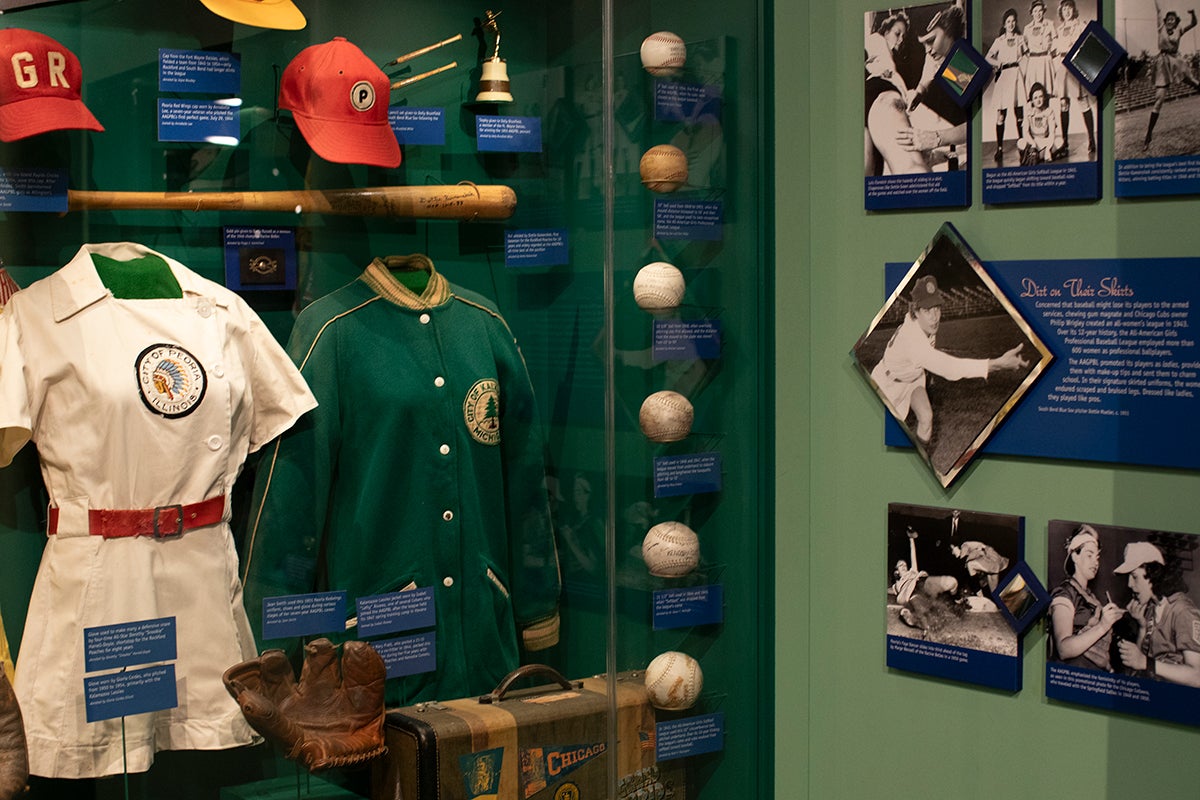
Preserved in Diamond Dreams are six silent witnesses to the evolution of women’s professional baseball: A series of All-American Girls Professional Baseball League (AAGPBL) game balls, each revealing the league’s remarkable transformation from its 1943 founding to its final season in 1954.
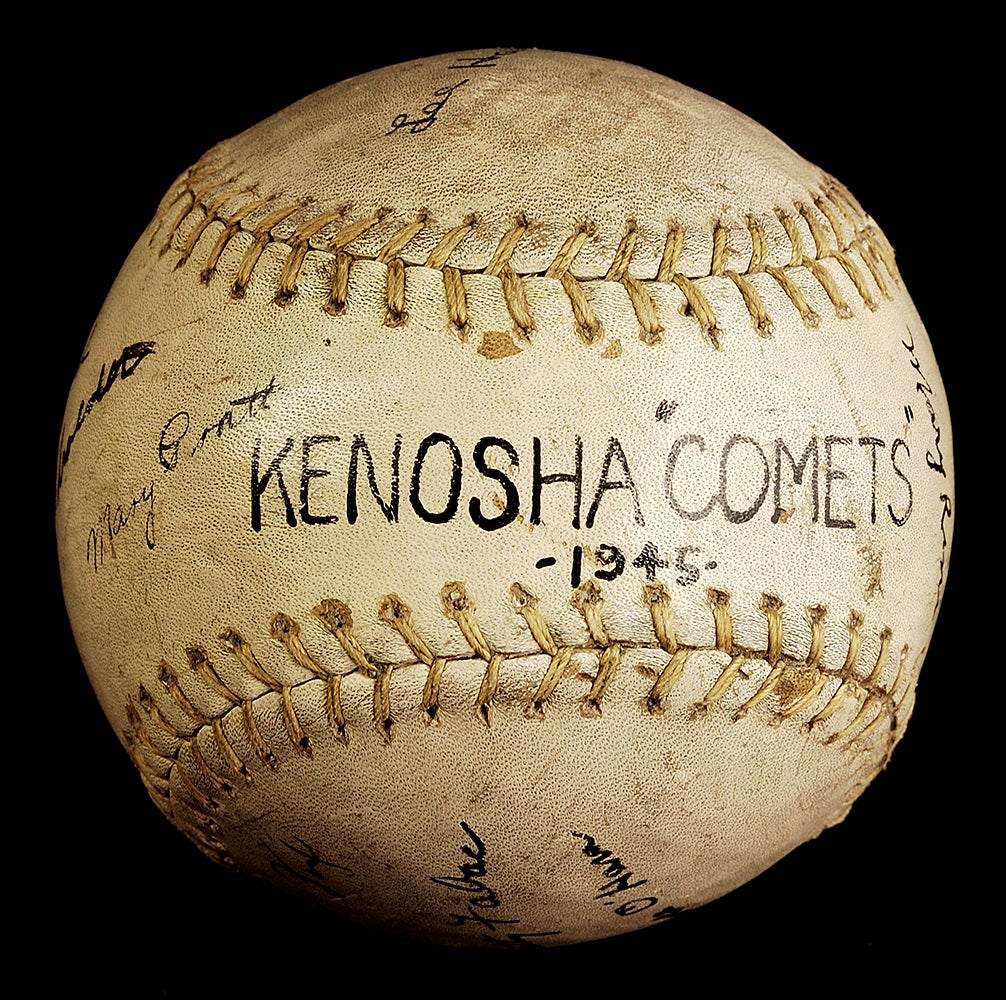
When the AAGPBL debuted in 1943, players employed a 12-inch circumference softball pitched underhand from 40 feet. The original balls were known as ‘deadballs,’ featuring a plastic center that limited their speed and distance off the bat, and white laces that offered poor visibility. It was a modified fast-pitch game played with baseball rules, including leading off bases.
Midway through that first season, the league sought a livelier pace. By mid-1944, the ball shrank to 11½ inches, the pitching distance stretched to 42 feet, and base paths lengthened to 68 feet, setting a precedent of constant innovation to make the game faster and more thrilling.
Each ball in the exhibit marks a milestone in that journey. In 1946, the ball dropped to 11 inches as pitchers gained the option of limited sidearm delivery. This shift in pitching style, from underhand to sidearm and eventually overhand, reflected the league’s gradual move toward traditional baseball pitching mechanics. Overhand pitching, fully adopted by 1948, added velocity and variety to pitching, demanding greater skill from players and making the game more challenging and engaging.
By 1948, the ball shrank to 10⅜ inches, and pitching distance jumped to 50 feet, almost matching baseball’s tempo and scale. In 1949, the AAGPBL introduced a new 10-inch ball with a cork center and red laces to replace the older plastic-centered “deadball”. These changes made the ball faster off the bat, easier to see, and more exciting for fans, sparking a surge in batting averages across the league. The pitching distance also increased from 50 to 55 feet, further aligning the women’s game with men’s professional baseball.
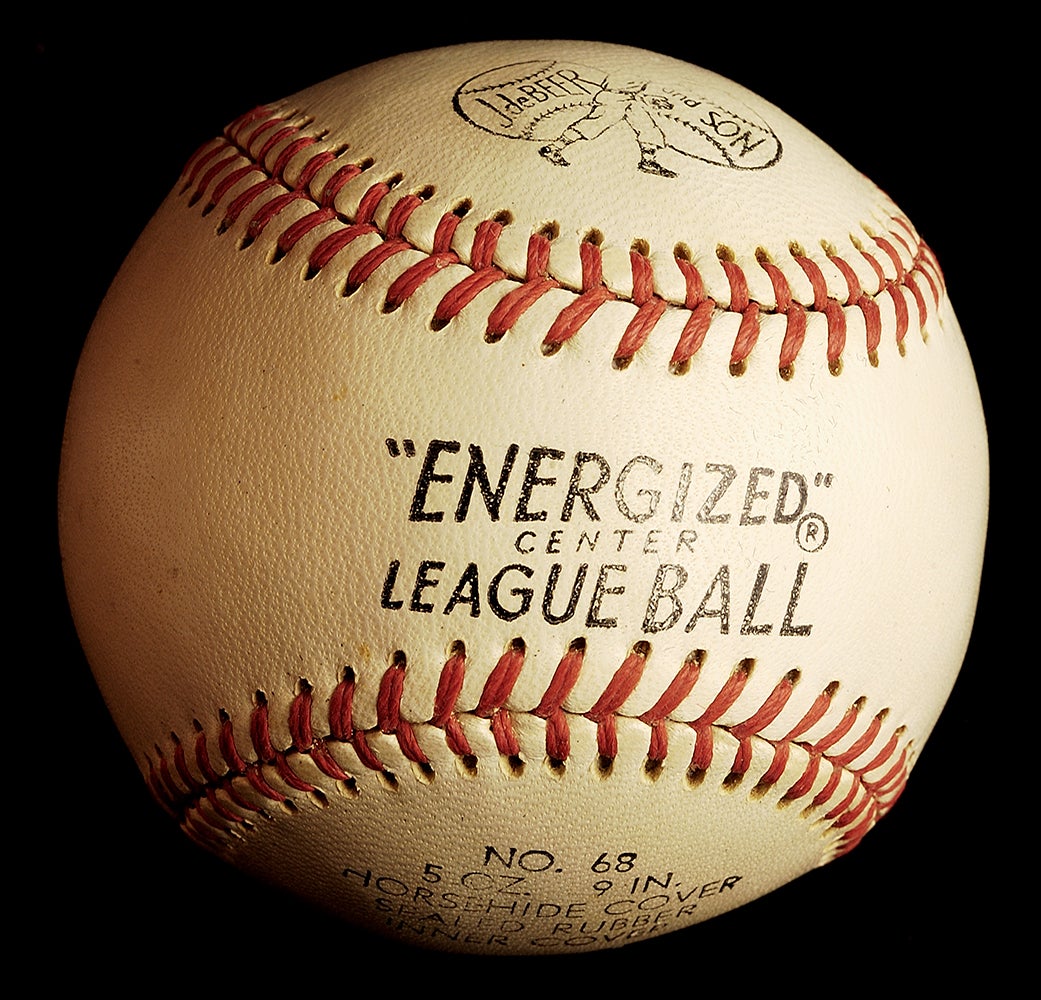
The evolution continued through the league’s final years. By 1954, the AAGPBL used a nine-inch ball identical to men’s Major League Baseball, and base paths stretched to 85 feet with a pitching distance of 60 feet – virtually mirroring the men’s game. Each size reduction demanded faster reflexes from fielders and greater skill from pitchers, highlighting the growing athleticism and adaptability of the league’s stars.
Yet the balls also tell a broader story of women athletes evolving alongside their sport, meeting each new challenge with determination. Every stitch, seam, and scuff reflects not only the evolution of a game but also the resilience of players who proved they belonged on baseball’s biggest stage.
The six AAGPBL balls on exhibit serve as reminders that even small changes can spark big revolutions. They honor a league and a generation of athletes who reshaped America’s pastime and left a lasting legacy.
Lizzie Nelson was the 2025 social media intern in the Frank and Peggy Steele Internship Program for Leadership Development
